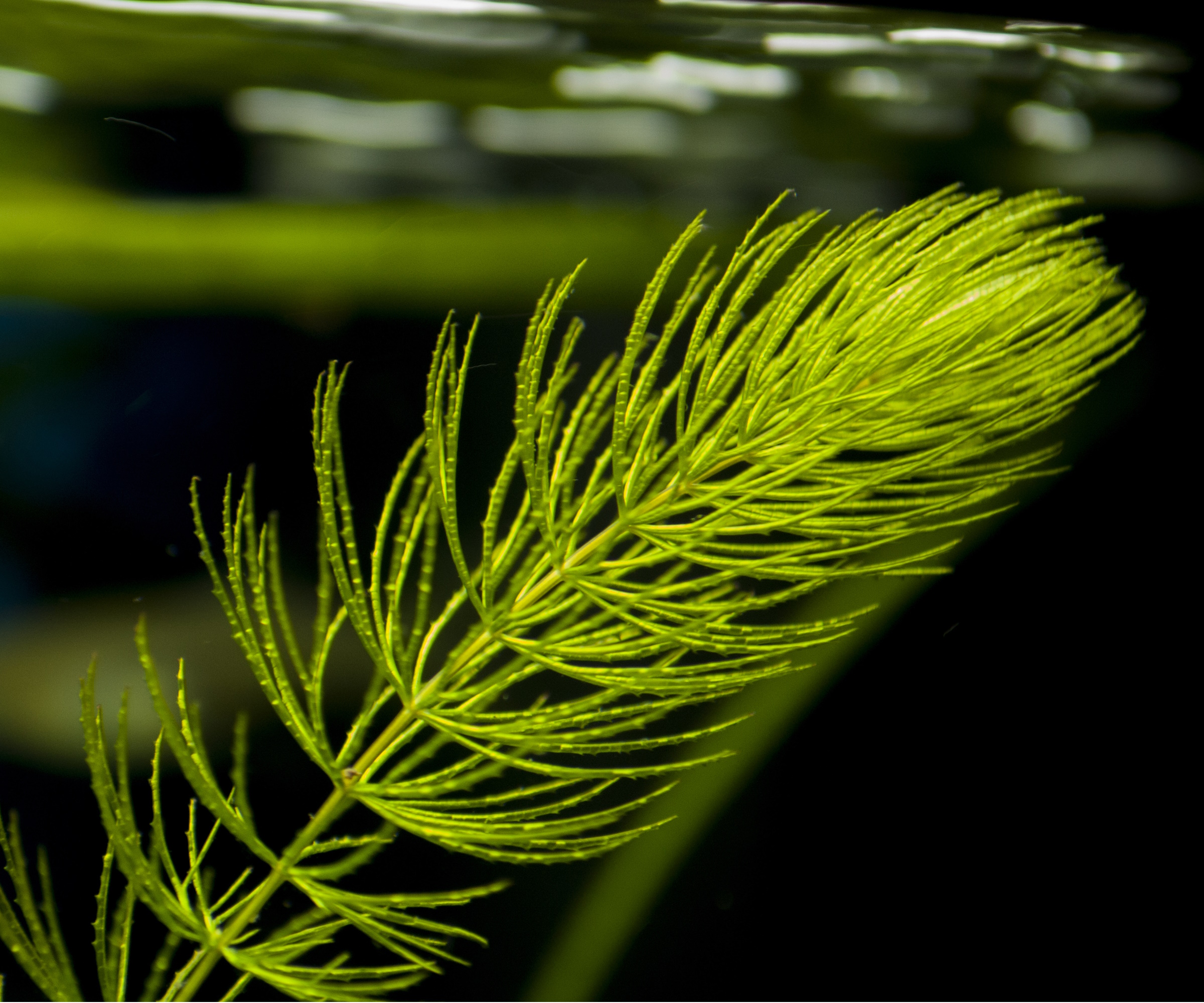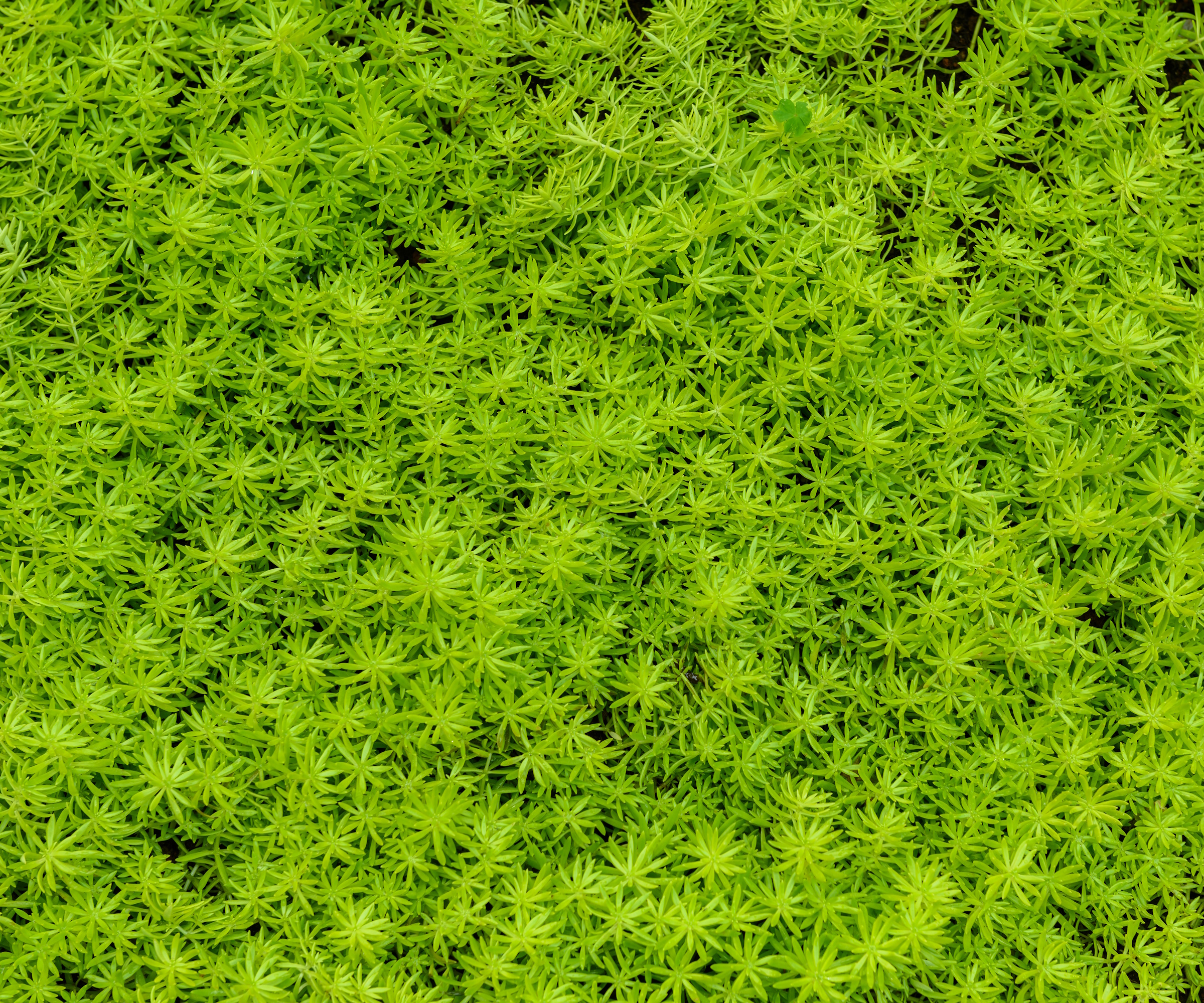Oxygenating pond plants – 5 plants to keep your pond water looking clear
Choosing the right plants for your garden pond can help keep it clean and support wildlife


Having a pond in your backyard is a wonderful way to welcome wildlife to your outdoor space and add water interest to your landscape.
There are lots of garden pond ideas to explore with many different pond plants to choose from, and it's important to consider including a range of oxygenating pond plants. These are plants that grow submerged in pond water where they absorb carbon dioxide and give off oxygen. They also absorb other impurities in the water and help to keep your pond looking clear by reducing the amount of nutrients absorbed by algae.
Not sure where to start? We've compiled an expert list of oxygenating pond plants that you should consider incorporating in your garden pond.

5 oxygenating pond plants
There are a range of pond plants that help produce oxygen and absorb impurities in the water. We've compiled an expert list of oxygenating pond plants so that you can keep your garden pond looking clear.
1. Coon's Tail

A must for all garden ponds is coon's tail, also known as Ceratophyllum demersum and hornwort. This pond plant has a feathery look resembling a tail of a racoon and can add fun texture to your water feature.
'Their submerged portions provide habitats for various micro and macro invertebrates, which can then be consumed by fish and other wildlife,' says Autumn Janus, plant expert from Perfect Plants.
'Additionally, coon's tail plants release oxygen during photosynthesis, helping to maintain adequate oxygen levels in the water for the benefit of aquatic organisms,' she adds.
You can shop for coon's tail online, like this hornwort bunch from Walmart.

Autumn is a horticulture specialist and marketing professional at Perfect Plants Nursery. With four years of experience in the horticulture industry, she has developed a passion for helping people create beautiful indoor and outdoor spaces to enjoy. Her expertise in horticulture encompasses a broad range of activities, including plant care and selection, landscape design, and maintenance.
2. Hair grass

To add some finer foliage, hair grass is a oxygenating plant that can work well in shallow areas of ponds.
Also known as Eleocharis acicularis, hair grass is a vibrant oxygenator that can be submerged by around 24 inches. It grows in tufts which provide habitats for pond wildlife, making it an excellent choice when creating a wildlife pond.
These delicate plants grow beautifully above the surface of the water, also adding height and structure to your pond area.
Find hair grass online, like this hair grass from NatureHills.com.
3. Spiked water milfoil

When building a pond, you should consider how to keep it clean and finding the best plants to help with this is vital. Spiked water milfoil is a great choice for an oxygenating plant that will absorb nutrients in the water and reduce the growth of algae.
Spiked water milfoil, or Myriophyllum spicatum, has attractive feathery foliage. It grows best just beneath the surface of water and you will see red flowers appear on its spikes in the summer months.
The dense foliage of spiked water milfoil provides excellent shelter for aquatic wildlife and supports the ecosystem of your pond.
4. Marsh Marigold

If you want to add some color to your pond, you should consider flowering plants that are oxygenators which both brighten up your pond and keep it healthy.
'Marsh marigold plants (Caltha palustris) can be a beneficial addition to ponds for a few reasons,' says Autumn. 'Firstly, they contribute to oxygenation by releasing oxygen into the water during photosynthesis. Secondly, they absorb excess nutrients from the pond, which helps prevent the growth of excessive algae and promotes a healthier ecosystem,' she adds.
Marsh marigolds are among the best water garden plants and will also provide shelter for different organisms and will bloom for many months at a time.
You can find marsh marigolds online, like this marsh marigold from NatureHills.com.
5. Waterweed

A popular pond plant that sits beneath the surface and helps with oxygenation is waterweed, or Elodea canadensis.
It has long fronds that help absorb nutrients from pond water and keep it clear. From spring to fall, you might notice your waterweed produce small white flowers which may appear above the surface.
The density of waterweed's foliage makes it an excellent habitat for aquatic wildlife, providing plenty of shelter.
Find waterweed online, like this waterweed from Walmart.
FAQs
How many oxygenating plants do I need for my pond?
Oxygenating pond plants help to keep your pond water clear. The number of plants you need to keep your pond in fit condition will depend on its size. It is generally recommended to have two to three oxygenating pond plants per square meter if you want to create an effective environment.
It's a good idea to consider oxygenating pond plants to help keep your pond water clean and support aquatic wildlife in your yard.
If you're interested in creating more water features in your yard, you might be inspired by our list of water garden ideas.
Sign up to the Homes & Gardens newsletter
Design expertise in your inbox – from inspiring decorating ideas and beautiful celebrity homes to practical gardening advice and shopping round-ups.

Tenielle is a Gardens News Writer at Homes & Gardens. She holds a qualification in MA Magazine Journalism and has over six years of journalistic experience. Before coming to Homes & Gardens, Tenielle was in the editorial department at the Royal Horticultural Society and worked on The Garden magazine. As our in-house houseplant expert, Tenielle writes on a range of solutions to houseplant problems, as well as other 'how to' guides, inspiring garden projects, and the latest gardening news. When she isn't writing, Tenielle can be found propagating her ever-growing collection of indoor plants, helping others overcome common houseplant pests and diseases, volunteering at a local gardening club, and attending gardening workshops, like a composting masterclass.
-
 I've spent over 200 hours testing vacuums and swear by my two Dysons – this is how I properly clean a Dyson vacuum filter for longer-lasting appliances
I've spent over 200 hours testing vacuums and swear by my two Dysons – this is how I properly clean a Dyson vacuum filter for longer-lasting appliancesYour Dyson vacuum will last much longer and clean at its best
By Dan Fauzi Published
-
 Bethenny Frankel calls this $695 machine the 'Rolls-Royce Cullinan of coffee' – it's a must-have luxury buy for iced-coffee lovers this springtime
Bethenny Frankel calls this $695 machine the 'Rolls-Royce Cullinan of coffee' – it's a must-have luxury buy for iced-coffee lovers this springtimeThe Real Housewife swears by a luxurious machine that makes nitro cold brew, cold brew, and cold espresso at the touch of a button – here's why it's worth it
By Sophie Edwards Published